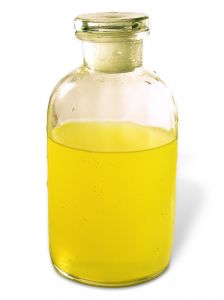As your San Francisco dangerous chemicals law firm, the team at The Brod Law Firm believes that it is vital for both companies and regulatory officials to prioritize consumer safety. We are prepared to help victims of chemical exposure file San Francisco products liability lawsuits and other related claims to help residents recover when dangerous chemicals cause illness or injury. We fundamentally believe, however, that preventing the community from being exposed to harmful chemicals upfront is always preferable to dealing with illness and injury in the aftermath of exposure.
 The San Francisco Chronicle reported this week on a positive move towards safety in California’s agricultural arena. Manufacturers of methyl iodide, a pesticide used in growing strawberries, have announced that the product will be pulled from the market in California and throughout the United States. Arysta LifeScience Corporation, a Japanese company, has cited economic factors in the decision to discontinue sales. The company has also voluntarily cancelled its registration permitting the sale of methyl iodide in California.
The San Francisco Chronicle reported this week on a positive move towards safety in California’s agricultural arena. Manufacturers of methyl iodide, a pesticide used in growing strawberries, have announced that the product will be pulled from the market in California and throughout the United States. Arysta LifeScience Corporation, a Japanese company, has cited economic factors in the decision to discontinue sales. The company has also voluntarily cancelled its registration permitting the sale of methyl iodide in California.
Although the company did not cite safety concerns in their statements, environmental groups have been lobbying against the product since it was first approved for use in our state. In 2007, federal authorities approved the use of methyl iodide as a temporary bridge between methyl bromide, a product known to contribute to the depletion of the ozone layer, and to-be-developed environmentally friendly options. In 2010, the pesticide was specifically approved by the state for use by California farms. Opponents to the product, including many in the public health arena, believe that the company is a possible carcinogen and that use of methyl iodide exposes residents who live or work near treated fields to fumes that might raise their cancer risk. Use of the pesticide has been limited, likely due to a high-profile campaign against the chemical
 San Francisco Injury Lawyer Blog
San Francisco Injury Lawyer Blog


 The most likely reason to bring a class action suit in federal court, instead of state court, is the diversity doctrine. This means that the suit involves at least one plaintiff who is a citizen of a different state than one or more of the defendants. For these purposes, companies are citizens of the state where they have their principle place of business. In order to file as a federal class, the plaintiffs must show four things: 1) Commonality (one or more issues is common to the whole class and, often, these common issues dominate over individual matters); 2) Adequacy (the selected representative can effectively protect the interests of all members of the class); 3) Numerosity (the class is large enough that individual lawsuits are not practical, making a class action a better method for resolving the matters); and 4) Typicality (the claim of the representative stems from a wrong to the class and is typical of the claims of the class members). These requirements aim to make sure that a class action is the best method for resolving a dispute and that a proper lead plaintiff is selected to represent the class in court.
The most likely reason to bring a class action suit in federal court, instead of state court, is the diversity doctrine. This means that the suit involves at least one plaintiff who is a citizen of a different state than one or more of the defendants. For these purposes, companies are citizens of the state where they have their principle place of business. In order to file as a federal class, the plaintiffs must show four things: 1) Commonality (one or more issues is common to the whole class and, often, these common issues dominate over individual matters); 2) Adequacy (the selected representative can effectively protect the interests of all members of the class); 3) Numerosity (the class is large enough that individual lawsuits are not practical, making a class action a better method for resolving the matters); and 4) Typicality (the claim of the representative stems from a wrong to the class and is typical of the claims of the class members). These requirements aim to make sure that a class action is the best method for resolving a dispute and that a proper lead plaintiff is selected to represent the class in court. As your
As your  The Oakland Tribune reported this week that Richmond is joining several area communities in attempting to protect our children and pets from dangerous rodent poisons. The Richmond City Council approved a measure, similar to those already in place in Albany and San Francisco, asking retailers to voluntarily stop sales of certain pest control products. Similar products have already been banned by the federal Environmental Protection Agency. The ban covers particularly toxic formulas as well as loose pellet poisons. In 2008, EPA officials requested that manufacturers re-tool their products so that the poisonous bait is in stations that are inaccessible to children and household pets. Manufacturers were asked to comply by June 2011 but not all makers have done so and the EPA is taking steps to remove the offending products. This process, however, takes time to accomplish and moves like that in Richmond attempt to control the ongoing problem.
The Oakland Tribune reported this week that Richmond is joining several area communities in attempting to protect our children and pets from dangerous rodent poisons. The Richmond City Council approved a measure, similar to those already in place in Albany and San Francisco, asking retailers to voluntarily stop sales of certain pest control products. Similar products have already been banned by the federal Environmental Protection Agency. The ban covers particularly toxic formulas as well as loose pellet poisons. In 2008, EPA officials requested that manufacturers re-tool their products so that the poisonous bait is in stations that are inaccessible to children and household pets. Manufacturers were asked to comply by June 2011 but not all makers have done so and the EPA is taking steps to remove the offending products. This process, however, takes time to accomplish and moves like that in Richmond attempt to control the ongoing problem. 
 Spiders, cockroaches, ants, rats, and moths: invasions by household pests induce cringing and exclamatory yelps. Many people want to prevent unwanted encounters with such pests and the destruction they may cause by putting out pesticides meant to deter or kill rodents and bugs. Consumers are driven by costs, effectiveness, and a concern for safety when choosing a pest-control product. The
Spiders, cockroaches, ants, rats, and moths: invasions by household pests induce cringing and exclamatory yelps. Many people want to prevent unwanted encounters with such pests and the destruction they may cause by putting out pesticides meant to deter or kill rodents and bugs. Consumers are driven by costs, effectiveness, and a concern for safety when choosing a pest-control product. The